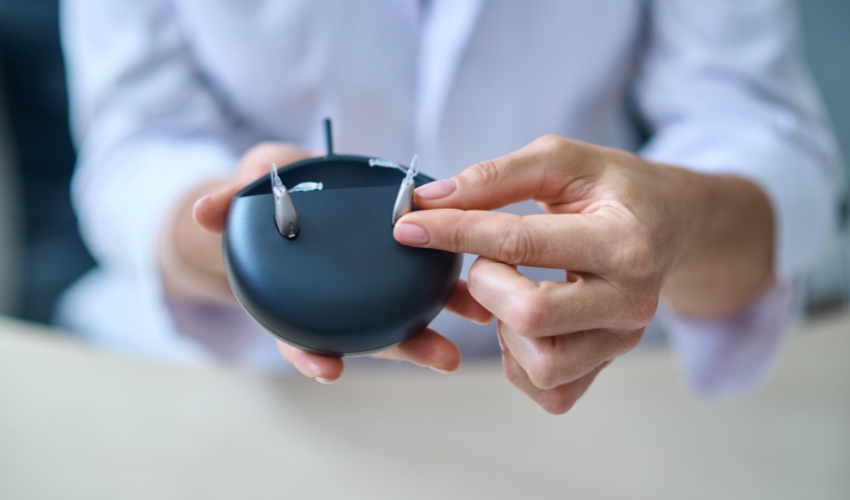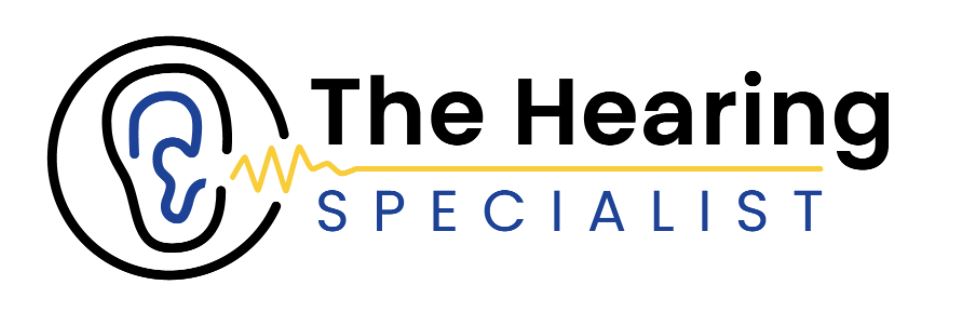Do you have issues with your hearing aid? It could be time to upgrade. It can be difficult to spot faults with your hearing aids, so, we will show you what to look out for.
Changes in hearing ability
One of the most common signs that it may be time to upgrade your hearing aid is experiencing difficulties in understanding speech. This can include needing help following conversations, particularly in noisy environments or when multiple people are speaking simultaneously. You might find yourself constantly asking others to repeat themselves or feeling left out of discussions. These challenges can lead to frustration and isolation, impacting both personal and professional relationships.
Additionally, if you find yourself frequently turning up the volume on your hearing aid, it could indicate a decline in your hearing ability. While adjusting the volume occasionally is normal in certain situations, such as watching television or talking in a noisy restaurant; consistently needing to raise the volume may signal that your current device is no longer meeting your requirements.
Another red flag to watch out for is difficulty hearing high-pitched sounds, such as birds chirping or the ringing of a doorbell. Changes in the ability to hear different frequencies can occur gradually over time and may not be immediately noticeable. However, if you find yourself missing these cues, it’s essential to address them promptly to prevent further deterioration of your hearing.
Here at the Hearing Specialist, we offer support for all hearing concerns. If you’re worried your hearing aids are underperforming, we can diagnose the issue and provide a suitable solution. Get in touch today to learn more.
Technology improvements
Hearing aid technology has taken huge strides in recent years. Without the recent developments, hearing aid users wouldn’t be able to hear as clearly as they do.
One significant improvement is the implementation of noise cancellation. Traditional hearing aids often struggle in noisy environments, making it challenging to separate speech from background noise. However, modern hearing aids can distinguish speech and noise, selectively amplifying speech while suppressing unwanted sounds. This feature significantly improves the clarity of speech in noisy settings, allowing users to engage more effectively in conversations even in challenging environments.
Furthermore, the integration of connectivity features has transformed the way individuals interact with their hearing aids. Many modern devices are equipped with Bluetooth, which enables seamless connectivity to smartphones, televisions, and other audio devices. This connectivity not only allows users to stream audio directly to their hearing aids but also opens up a range of additional functionalities, such as remote control and personalised adjustments via smartphone apps. By utilising these connectivity features, you can customise your hearing experience to suit your individual preferences and lifestyle needs.
Another notable improvement is the incorporation of artificial intelligence. AI-powered hearing aids can adapt and learn from user preferences and listening environments, continuously optimising sound processing for optimal performance. These hearing aids can automatically adjust settings in real-time based on changes in the acoustic environment, ensuring a consistently personalised and adaptive listening experience.
Moreover, advancements in speech recognition have greatly improved the ability of hearing aids to understand and process speech in various contexts. New hearing aids can distinguish between different speakers and adapt their amplification settings accordingly, making conversations more natural and effortless for users.

Physical wear and tear
Over time, just like any other piece of technology, hearing aids can experience wear and tear from regular use. These physical changes may not only affect the appearance but also its functionality and reliability.
One common indicator of wear and tear is visible damage to the external components of the hearing aid, such as cracks, scratches, or dents. These issues may seem minor at first, but they can compromise the integrity of the device, leading to decreased performance over time. Additionally, damaged casing can expose sensitive internal components to moisture, dust, and debris, increasing the risk of internal damage.
Internal components of the hearing aid, such as the microphone, receiver, or battery, can also deteriorate with prolonged use. For instance, the microphone may become less sensitive, resulting in decreased sound quality or difficulty picking up softer sounds. Similarly, the receiver (speaker) may experience wear, leading to distortion or fluctuations in volume. Furthermore, the battery life of older hearing aids may diminish over time, requiring more frequent replacements or recharges.
Finally, as hearing aids continue to evolve, newer models often boast improved durability and reliability compared to their predecessors. Upgrading to a newer device can provide peace of mind knowing that you’re investing in a more robust and resilient solution that is less prone to wear and tear. Additionally, newer models may offer enhanced water and dust resistance, making them more suitable for individuals with active lifestyles or those exposed to challenging environmental conditions.
At the Hearing Specialist, our hearing aid range features some of the biggest brands, such as Bernafon, Widex and Signia.

Lifestyle changes and needs
Once you recognise how lifestyle changes and needs can impact your hearing, you will know when it’s time to upgrade.
A change in work environment or professional responsibilities is a sign you may need to change your device. For instance, transitioning from a quiet office setting to a more dynamic workplace with frequent meetings or presentations may require a hearing aid with enhanced speech clarity and noise reduction capabilities. Similarly, individuals who work in noisy or demanding environments, such as construction sites or factories, may benefit from upgrading to a hearing aid specifically designed to withstand challenging acoustic conditions.
Moreover, changes in social and recreational activities can also influence the type of hearing aid that best suits your lifestyle. As we age, many of us become more active in social gatherings; attending parties, dinners, or cultural events where background noise is prevalent. Upgrading to a hearing aid with noise reduction features can help alleviate the frustration of trying to follow conversations in noisy settings, allowing you to fully participate and engage with others.
We hope you’ve enjoyed reading our latest article about when it’s time to upgrade your hearing. If you would like to learn more – get in touch today.




